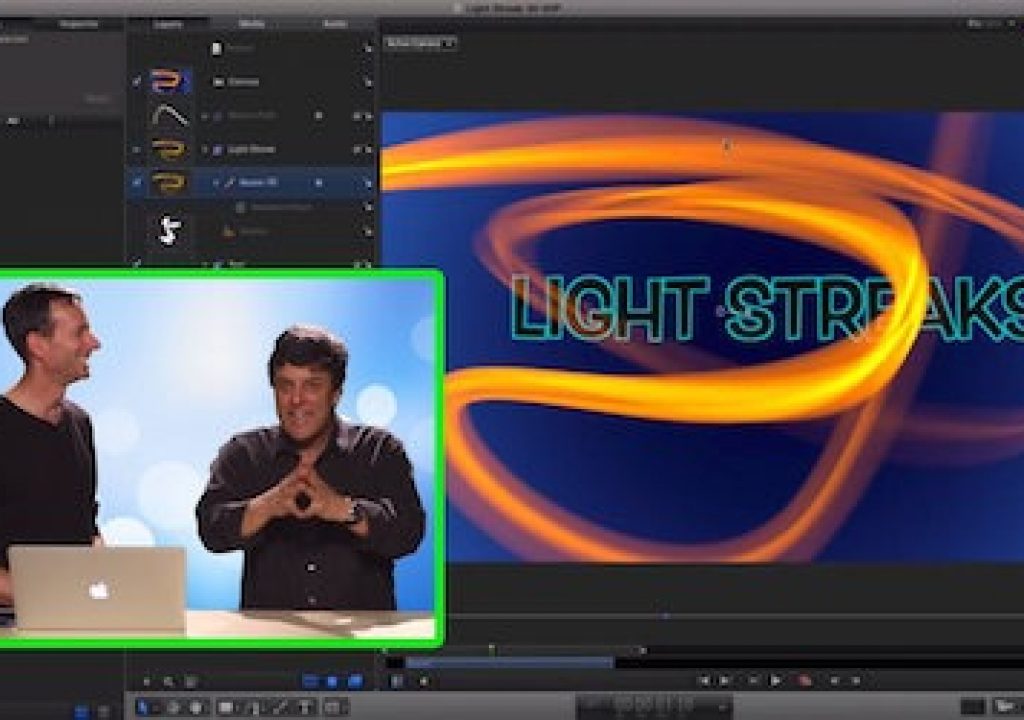Can you wrap a light streak around text in Motion?
That’s the question on this week’s MacBreak Studio with Steve Martin from Ripple Training that I attempt to answer, using an example from an earlier episode on creating light streaks.
In that episode I created an animated a light streak that appeared to move around both in front of behind a text layer. As I show here, it is in fact a flat plane in 3D space and is composited on top of the text. One way to make the light streak move behind the text and in front is to tilt the x or y axis of the light streak plane so that it intersects the text plane: while this method works, it is limited in that everything on one side of the plane will appear either in front or behind the text.
The light streak in this example was created using a Shape layer, and shapes in Motion are restricted to 2D planes; in other words, the control points of shapes have only x and y coordinates. To move them in z-space, you need to tilt the plane.
However, the Motion Path behavior includes control points in all three axes of x, y, an z. So anything animated along a motion path using this behavior can move freely in 3D space. I demonstrate this idea by starting with a preset particle emitter, applying the Motion Path behavior, and then setting and moving control points to wrap around the text layer.
A key step to this process, which I skipped in this video, is to enable “Global 3D” in the Emitter Inspector so that the particles are composited in 3D space around other layers, rather than in the Layer list stacking order. With both that and the Face Camera checkbox enabled, individual particles will appear to have volume and move in front of and behind other layers in 3D space.


